Lacquering
The appearance of dents or body damage on your car is certainly nothing you would want to happen in your worst nightmares, but it can become an unfortunate reality at some point in time.
If the damage is not too large, most people can fix it by themselves with a little time and patience.
WHAT DO I NEED FOR PERFECT LACQUER REPAIR?
Rust removal/sanding:
- Rust scraper
- Sandpaper
- Sand sponge
Prime/ putty:
- Anticorrosive base
- Spackle (US)/putty (UK)
- Spray putty
- Filler
1. Cover lacquering
Any existing scratches, body damage, dents or rust patches have been successfully taken care of by Hagmans lacquer preparations products such as spackle or anticorrosive agent.
The surface to be covered must be clean and dust-free and primed with Primer. |
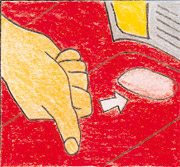 |
2. Test-spray correctly
Test the spray flow first on a piece of sheet metal or piece of paper in order to assess the correct spraying distance and more importantly to compare the colour tone. Important: shake the can first for approximately two minutes after the ball has loosened. |
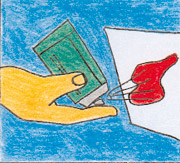 |
3. Keep your distance
The spraying distance should be approximately 25cm. A tip from the pros: at shorter distances the lacquer film will be more "wet" and therefore darker. Longer distances result in thinner lacquer films and the colour tone will therefore be lighter. |
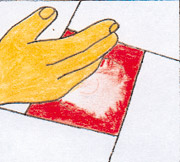 |
4. Masking
The surfaces adjoining the damaged area should first be covered with masking compound/tape or paper. |
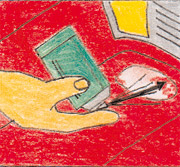 |
5. Base lacquering
Apply on a light spray of paint for the first application; this will function as an "attraction grate" for the following lacquer application(s). The layer of lacquer will become homogenous (no running). |
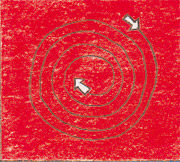 |
6. Base lacquering smaller surfaces
Tips from the pros: Schablon lacquering is recommended when lacquering smaller surfaces. Using material such as stiff cardboard, cut out a hole that is somewhat larger than the damaged area. Hold the cardboard 1-2cm above the damaged area and spray using circular movements. |
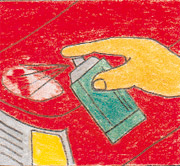 |
7. Base lacquering larger surfaces
Tips from the pros: larger surfaces are lacquering by means of overlapping. The first strokes are applied as a light film of paint. Move the spray can horizontally and in parallel downwards. Then move the can vertically in the same way.
Cover lacquering: runs can occur at the turn of individual stroke lines. To avoid this always make turns outside of the actual lacquering site |
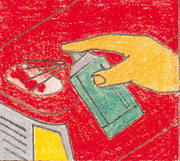 |
8. Finish sprayning
After 5-10 minutes, a spray application should be carried out with a topcoat, until a smooth and glossy surface is achieved. |
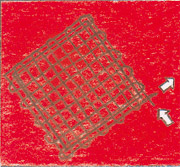 |
Golden rules
- Always be thorough with preparatory work.
- Always follow instructions for the product.
- Always strive to perform the work in a premises with a room temperature of about 20°C and with normal humidity levels.
- Always ensure good levels of ventilation.
- Always handle the products with care and use protective equipment.
|